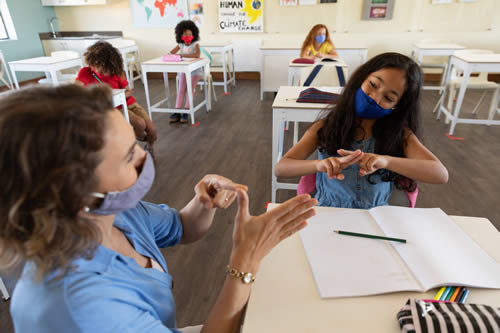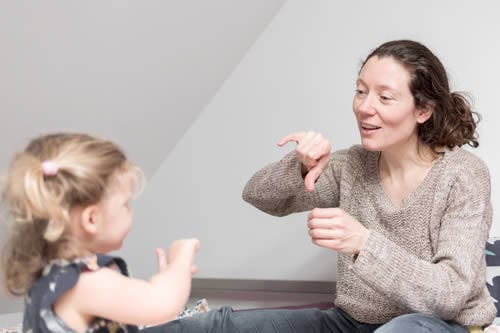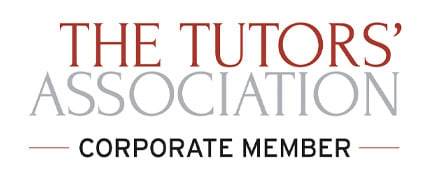According to the charity The National Deaf Children’s Society, there are approximately 50,000 children in the UK with a diagnosed hearing loss. Fifty percent of these youngsters will have been born with some kind of impairment whilst the other half will go on to develop it in childhood. In addition, many more children develop temporary deafness with an estimated eight out of ten kids suffering from glue ear before the age of ten.
“Deafness is a spectrum and not all children have the same difficulties,” says Emma Fraser, Teacher of the Deaf with the organisation. “Whatever their challenges, hearing loss can have significant, long-term effects. It can delay language development or cause disordered speech and children can miss chunks of learning in the classroom. This can affect their confidence and their ability to make friends which then impacts their emotional health and wellbeing.”
She adds that deafness often comes with additional needs such as Down’s Syndrome, ADHD, communication issues or autism.
Given that it’s such an individual condition, how do specialists approach working with hearing-impaired youngsters and help them to thrive?

Emma Parker has been working with deaf students in educational and health settings for more than twenty years and has experience working with all ages from primary level to university undergraduates.
She says it’s important to not underestimate what deaf children can achieve. “But at the same time, if a deaf child has some level of hearing and a good speaking voice, they can give the impression that they’ve understood more of a lesson than they really have,” she points out. “Teachers need to check-in and find out whether they really have understood. They won’t necessarily ask for help in front of thirty other students.”
Emma mentions a number of simple steps teachers can take to make learning easier for deaf students such as:
- Using subtitles on videos
- Not talking while you’re writing on the board with your back to the class
- Not addressing students while silhouetted in front of a window as they won’t be able to read your lips
“If children have hearing aids or cochlear implants, they can hear but the devices take in every single sound,” she adds, “and it’s difficult for the brain to learn to filter out the unwanted noise. It’s important to remember just how tiring listening can be for students.”
Making A Positive Impact With Deaf Students

Tutor Sabrina brings an innovative approach to working with deaf students. She had a ‘lightbulb moment’ some years ago when teaching functional skills to deaf pupils at a higher education college.
“I speak Italian and French and as a linguist, I suddenly realised that the way we often teach English to deaf people is all wrong,” she explains. “Signing is usually their first language and it’s so different to the way hearing people communicate that it makes learning English in the traditional way very confusing for them.”
There are four key differences between sign language and English, Sabrina points out:
- There are no synonyms in sign language – for example, there is only one gesture for ‘big’ – whereas English has ‘huge’, ‘large’, ‘enormous’ and ‘massive’, to name just a few.
- There are no tenses in sign language
- There are also no conjunctions such as ‘because’ or ‘and’
- Word order is different from the way hearing people speak and write
Because of this, she says, it makes sense to teach English to deaf students as a second language. Explaining grammar, vocabulary and structure makes it much easier for them and then opens the gateway to learning other subjects.
Sabrina, who has just launched her own consultancy, is also enthusiastic about the possibilities offered by ever-developing computer technology. “The internet has been life-changing for many deaf people,” she comments. “They can text each other or face-time and also access tutorials online. It’s opened a whole, social world to them. It’s important for tutors and teachers to also keep up-to-date with new developments.”
When working face-to-face, however, she admits she has to be careful. “I’m Italian and I talk with my hands,” she laughs. “It can distract students if I’m waving my arms around!”
“I love working with deaf students,” she concludes. “Deaf students often appreciate it if you take steps towards learning about their world. They have their own, very definite, culture and community”.




